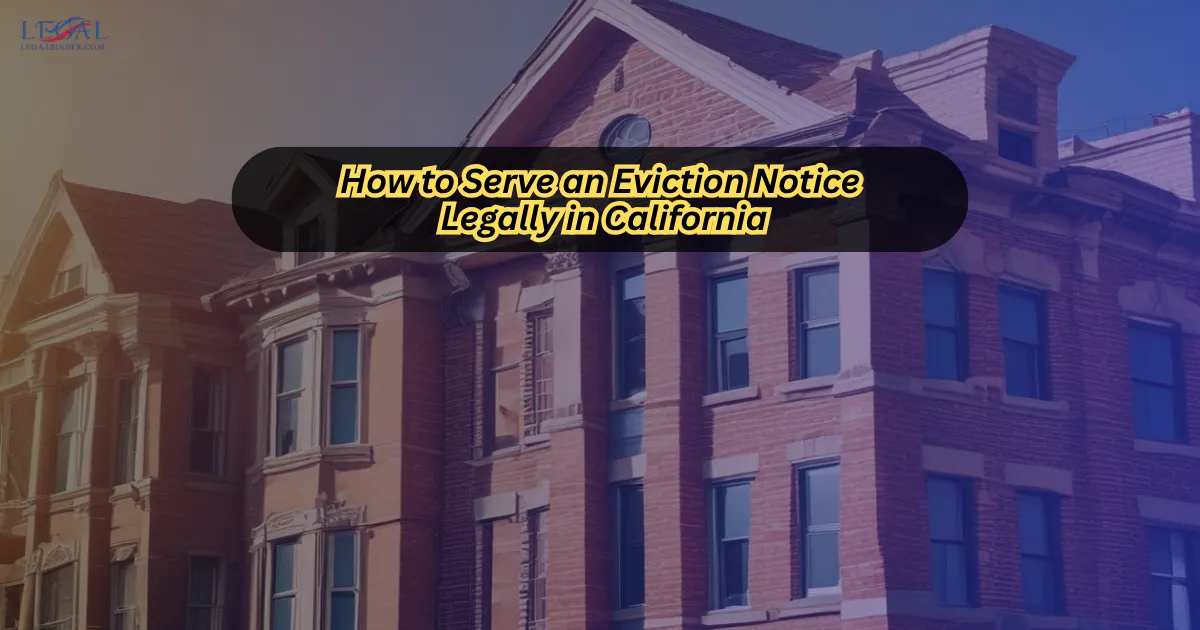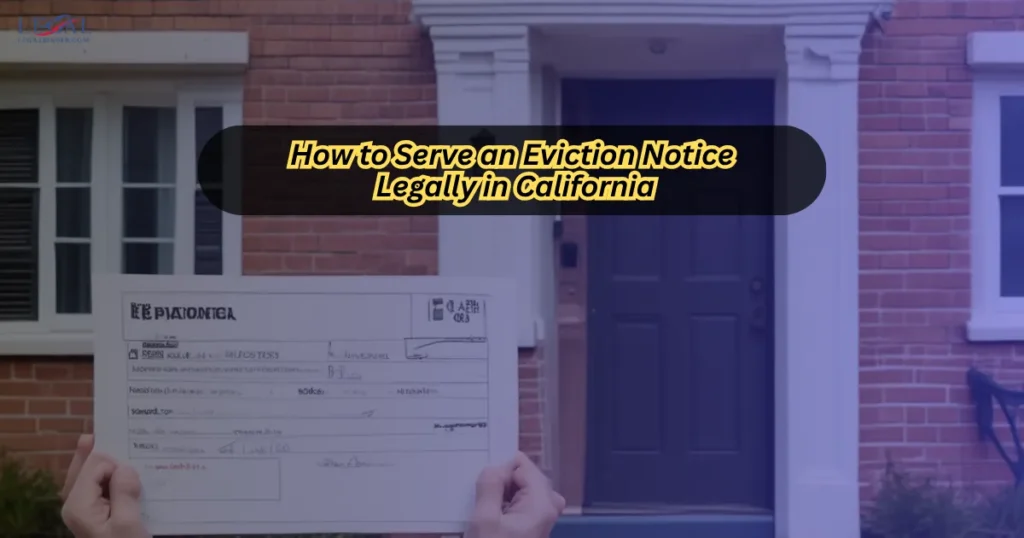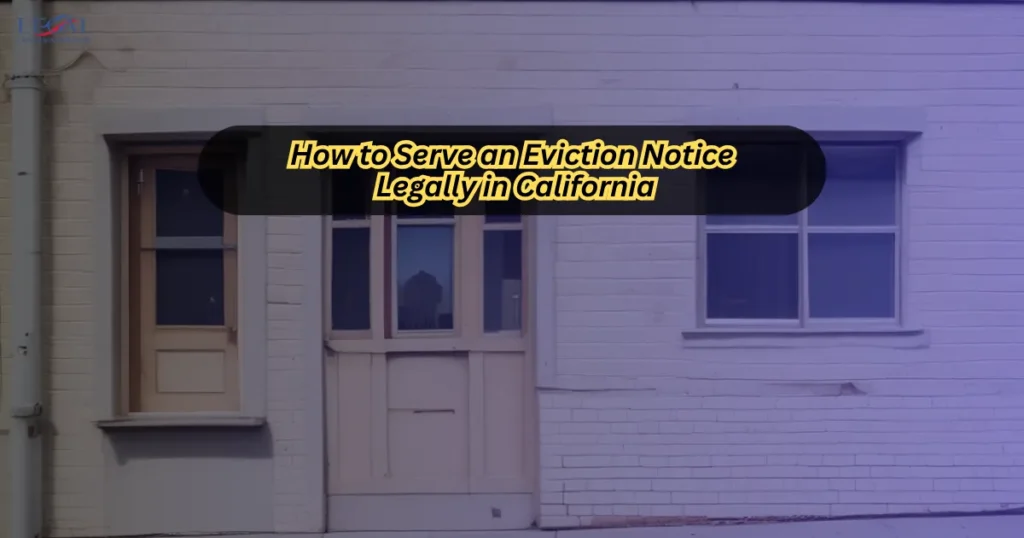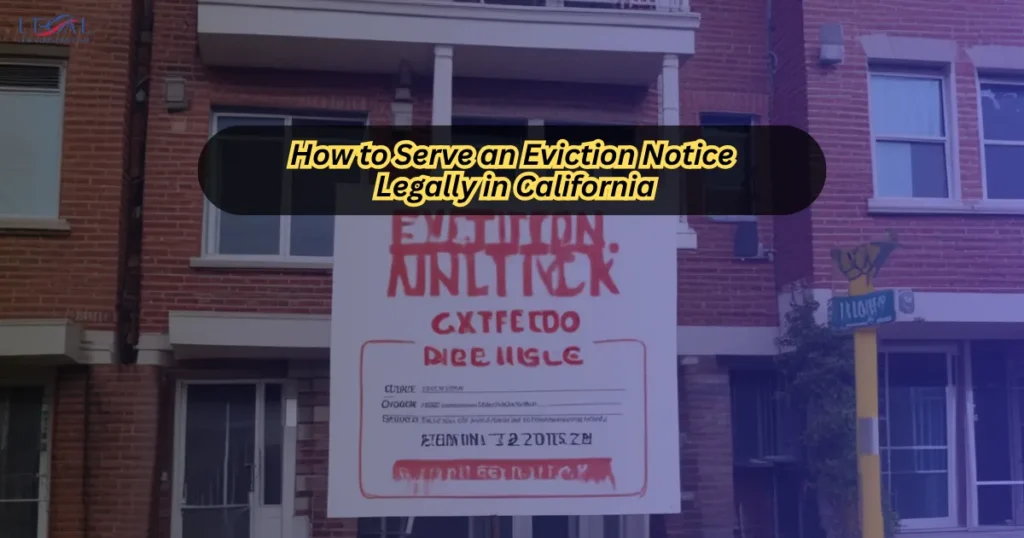Physical Address
304 North Cardinal St.
Dorchester Center, MA 02124
Physical Address
304 North Cardinal St.
Dorchester Center, MA 02124

Serve an eviction notice legally in California and you protect not only your property rights but also ensure compliance with one of the most tenant-protective legal systems in the country. Evictions are challenging—for landlords and tenants alike—because they involve more than just removing someone from a property; they touch on people’s homes, lives, and stability.

Imagine this: You’ve given countless chances for rent payment or compliance with lease terms, but the violations keep happening. You’re frustrated, but you also know California law is strict about the eviction process. One wrong step can mean starting all over again, losing months in court, or facing legal penalties. That’s why understanding and following the exact legal procedures for serving an eviction notice in California is essential for a fair and lawful resolution.
For more California property law guidance and landlord-tenant resources, visit our homepage or browse our California Eviction Law Resource Library.
In California, eviction procedures are regulated by state law, specifically California Civil Code and Code of Civil Procedure. You must comply with these statutes to avoid wrongful eviction claims.
Used when a tenant is behind on rent. Gives them 3 days to pay in full or vacate.
Applied when a tenant violates lease terms (other than nonpayment of rent). Allows 3 days to fix the violation.
Issued for severe lease violations such as illegal activity, significant property damage, or repeated noncompliance.
Obtain state-compliant notice forms from official sources or attorney-reviewed templates.
Allow the legally mandated time to expire before taking the next step.
If the tenant fails to comply, proceed with filing at the California Superior Court in your county.

Can I email an eviction notice to a tenant in California?No. California law requires physical service methods under CCP §1162.What happens if I serve an invalid notice?The court may dismiss your case and you may need to start the process over.Do local laws affect eviction notices?Yes. Some California cities and counties have stricter rules on evictions and notice periods.Can a tenant stop an eviction by paying rent after receiving a notice?For nonpayment notices, full payment within the 3-day window typically stops the eviction.

Serving an eviction notice legally in California requires careful attention to detail, compliance with state and local laws, and professional communication. By following proper procedures and avoiding retaliatory actions, you protect your property rights while respecting your tenant’s legal protections.
Evictions are never easy, but with the right approach, they can be resolved efficiently and fairly. If you are unsure at any step, seek legal counsel and consult official state resources.
For more landlord guidance and California-specific legal templates, visit our home page today.